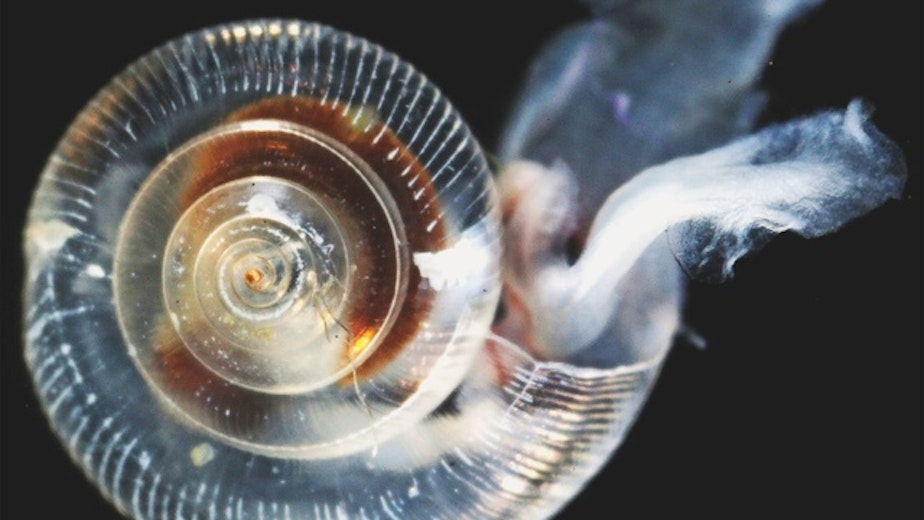New Study: Acidifying Ocean Destroying Sea Butterflies

Tiny, delicate marine snails called pteropods are a key part of the marine food web. New research indicates they are dissolving to a greater extent than previously thought because of ocean acidification.
Scientists know that greenhouse gas emissions are contributing to the dropping pH in the world’s oceans. They also knew that as the oceans become more corrosive they eat away at marine species’ shells before they have a chance to form. But new research reveals the unprecedented scale of destruction of some of the ocean’s tiniest shell-makers.
Pteropods are also referred to as sea butterflies. These swimming snails grow to about 1/8 of an inch. Up and down the West Coast, they are showing signs of dissolution. Under the microscope their shells look like they are being eaten away.
“It’s basically as if you poured acid on top of the shell or imagine burned skin of humans,” said Nina Bednarsek, the lead author of a new paper published in the Proceedings of the Royal Society B. “You just see, instead of having intact shell, the shell is all rough.”
In a first-of-its-kind study, Bednarsek looked at hundreds of pteropods gathered from California to Washington.
The extent of the damage surprised her. Fifty percent of the pteropods sampled in coastal waters had shells that looked like crumbling old cheese.
“Whichever samples I looked under the microscope I would see dissolution,” Bednarsek said. “It was a big surprise. In some of the regions along the Washington coast every single pteropod showed severe shell dissolution.”
A pteropod showing swimming difficulties and partially dissolved shell after exposure elevated CO2 conditions (1,600 ppm) for two weeks. Credit: Nina Bednarsek
An actively swimming pteropod in seawater with the low surface CO2 conditions that preserve shell intact with no dissolution. Credit: Nina Bednarsek
Pteropod populations have been declining in recent decades. That has some fisheries biologists concerned about impacts up the food chain. Salmon, herring and mackerel are all known to eat pteropods.
Richard Feely is a scientist with the National Oceanic and Atmospheric Administration who has been studying ocean acidification for 30 years. He’s a co-author on Bednarsek’s paper.
“Can these fish then switch to other sources of food? We don’t know. We have to understand what this means for the food web,” said Richard Feely, a scientist with the National Oceanic and Atmospheric Administration who has been studying ocean acidification for 30 years. Pteropods are also eaten by some types of birds and whales.
“We may be seeing the beginnings of an ecological change and quite frankly we don’t know all the ramifications yet, but they could be large,” Feely said. “It allows us to understand very clearly that how humans choose to use fossil fuel for energy could indeed have a very large impact on the health of our oceans.”
The ocean absorbs one third of global CO2 emissions. Bednarsek’s modeling projects that, if current CO2 emission rates remain the same, if she were to go out and conduct the same coastal sampling in 2050, 70 percent of the pteropods would show signs of dissolving shells.
Copyright 2014 ERTHFX. To see more, visit earthfix.kuow.org.
